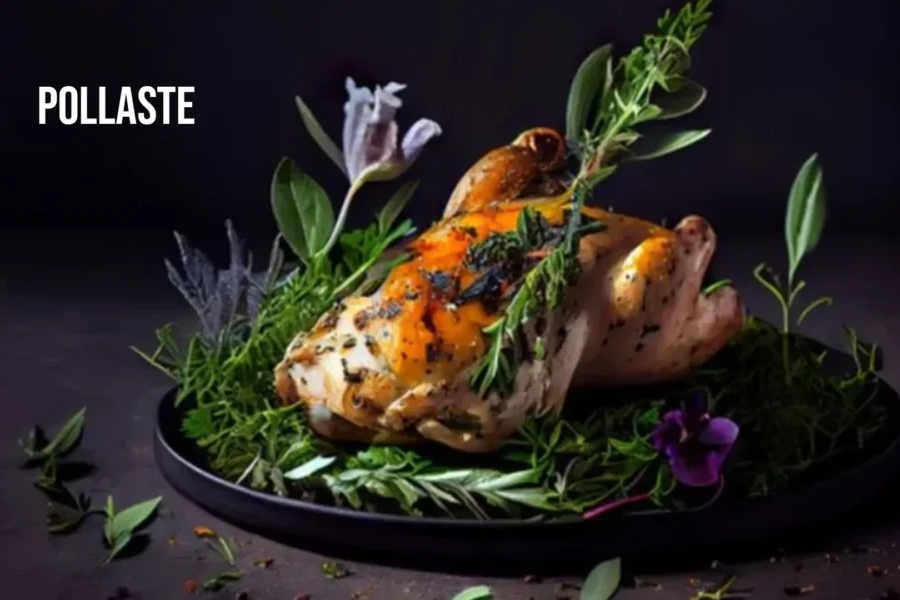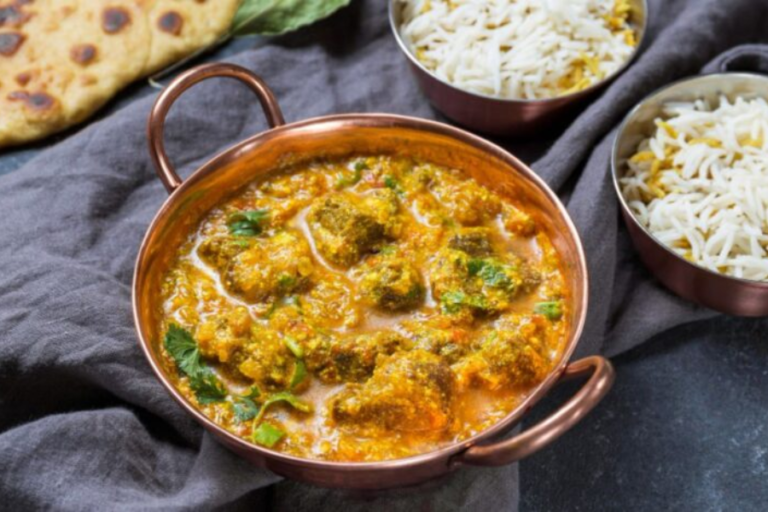Pollaste: A Culinary Delight from the Heart of Tradition
When it comes to traditional dishes that embody rich cultural heritage, simplicity, and delightful flavors, Pollaste stands out as a true culinary gem. This beloved dish, primarily based on chicken, is a testament to the harmonious blend of history, family traditions, and exquisite ingredients. For those unfamiliar with Pollaste, it refers to a traditional preparation of chicken, often marinated with a mix of spices and cooked to perfection. Its origins are deeply rooted in family gatherings, celebrations, and everyday meals, making it a timeless favorite in many households.
Join us as we explore the history, preparation, significance, and enduring appeal of Pollaste, uncovering why it continues to captivate taste buds across generations.
What is Pollaste?
Pollaste is a traditional dish centered around roasted or grilled chicken, carrying profound cultural significance. While the term “Pollaste” translates to “chicken” in several Latin-based languages, including Catalan and Italian, its culinary identity extends far beyond a simple roast. Pollaste is typically marinated in a vibrant blend of spices, herbs, and aromatics, which infuse the chicken with a distinctive and mouth-watering flavor profile.
Origins of Pollaste
The roots of Pollaste can be traced back to Mediterranean cuisine, where poultry has long been a staple ingredient. This dish was traditionally prepared during festivals, holidays, and family gatherings, symbolizing prosperity, unity, and communal harmony. Each region has contributed its unique twist to Pollaste, incorporating local spices and cooking techniques that enhance its flavor.
For instance, in Catalonia, Pollaste might be marinated with regional herbs like rosemary and thyme, imparting a fragrant and earthy taste. Meanwhile, in southern Italy, the dish could be infused with garlic, olive oil, and lemon zest, offering a zesty and aromatic flavor. Despite these regional variations, the essence of Pollaste remains consistent—a hearty, flavorful meal that brings people together.
The Significance of Pollaste in Traditional Celebrations
Pollaste is more than just a dish; it is an integral part of cultural celebrations and family traditions. Preparing Pollaste is often seen as a ritual passed down through generations, symbolizing abundance, hospitality, and familial love. Whether served at a cozy family dinner or a grand festive feast, Pollaste serves as a centerpiece that showcases culinary skills and honors longstanding traditions.
During significant holidays such as Christmas, Easter, or local festivals, Pollaste is frequently the highlight of the meal. The process of marinating, cooking, and presenting Pollaste is as important as savoring it, with families often gathering in the kitchen to prepare the meal together. This collaborative effort fosters a sense of unity and continuity, reinforcing the dish’s role in celebrating shared moments and cultural heritage.
How Pollaste Is Prepared: A Step-by-Step Guide
The allure of Pollaste lies in its straightforward yet flavorful preparation. At its core, Pollaste revolves around fresh, high-quality chicken, a fragrant marinade, and a cooking method that enhances the natural flavors of the ingredients. While variations exist based on regional and familial traditions, the following guide outlines the fundamental steps to crafting an authentic Pollaste.
Ingredients
To create an authentic Pollaste, gather the following ingredients:
- Whole chicken (or chicken pieces like thighs and drumsticks)
- Olive oil – serves as the base for the marinade
- Lemon juice – adds freshness and acidity
- Garlic – imparts a robust, aromatic flavor
- Herbs – typically rosemary, thyme, and parsley
- Salt and pepper – essential for seasoning
- Paprika (optional) – introduces a hint of smokiness
- White wine (optional) – enhances depth of flavor
- Onions and carrots (optional) – for roasting alongside the chicken
Marinating the Chicken
The secret to a flavorful Pollaste lies in the marinade. Combine olive oil, garlic, lemon juice, and herbs to create a fragrant mixture. Some recipes incorporate white wine into the marinade, which tenderizes the meat and adds complexity. Coat the chicken generously with the marinade, ensuring every piece is well-covered. Allow the chicken to marinate for at least 4-6 hours, preferably overnight, to let the flavors fully penetrate the meat.
Cooking Methods for Pollaste
Pollaste can be prepared using various cooking methods, each imparting a unique flavor and texture to the dish. Here are the most common techniques:
Oven-Roasted
This is the most popular method for cooking Pollaste. Preheat your oven and place the marinated chicken in a roasting pan, optionally on a bed of onions, carrots, or potatoes. Roast the chicken at a moderate temperature until the skin turns crispy and the meat remains juicy and tender. Basting the chicken with its own juices during cooking helps maintain moisture and enhance flavor.
Grilled
For those who prefer a smokier flavor, grilling Pollaste over charcoal or an open flame is an excellent choice. The slow cooking process allows the marinade to caramelize on the exterior, locking in moisture and creating a deliciously charred crust. Grilled Pollaste is perfect for outdoor gatherings and summer feasts, offering a vibrant and smoky taste.
Pollaste A La Brasa (Wood-Fired)
In certain regions, Pollaste is cooked in a wood-fired oven, which imparts a distinct smoky flavor that cannot be replicated by conventional ovens. The intense heat of the wood fire creates a beautifully charred exterior while keeping the meat tender and juicy inside. This method is often reserved for special occasions, adding a rustic and authentic touch to the dish.
Serving Pollaste
Pollaste is typically served with simple yet complementary side dishes that enhance its rich flavors. Common accompaniments include:
- Roasted vegetables (such as potatoes, carrots, and onions)
- Fresh salads with seasonal greens
- Rice or couscous
- Crusty bread to soak up the flavorful juices
- Lemon wedges – a squeeze of fresh lemon juice over the chicken brightens the flavors and adds a touch of acidity that balances the richness of the dish
Variations of Pollaste
Over time, Pollaste has evolved, and different regions have developed their own unique variations. Here are a few popular twists on the classic Pollaste:
Pollaste a la Catalana
In Catalonia, Pollaste a la Catalana is a festive variation often served during holidays. This version typically combines chicken with dried fruits like prunes and apricots, adding a sweet contrast to the savory flavors. The sweetness of the fruit complements the aromatic herbs, creating a perfect balance that enhances the overall taste of the dish.
Pollaste al Limone (Lemon Chicken)
A classic variation from southern Italy, Pollaste al Limone emphasizes the use of lemon as the star ingredient. The chicken is marinated in a mixture of lemon juice, garlic, and herbs, imparting a bright, zesty flavor that is particularly refreshing for summer meals. Often grilled or baked, this version is served with simple salads or vegetables, making it a light yet flavorful option.
Spiced Pollaste
In some regions, Pollaste is prepared with a blend of spices such as paprika, cumin, and coriander, giving the dish a warmer, more robust flavor profile. This spiced version is often served with rice or couscous and pairs well with yogurt-based sauces or chutneys, adding an extra layer of flavor complexity.
Why Pollaste Endures: A Dish for All Occasions
Pollaste has remained a beloved dish for generations due to its versatility and timeless appeal. Whether served at a family dinner, a holiday feast, or a casual gathering, Pollaste always brings people together. Its simple ingredients and straightforward preparation make it accessible to home cooks, while its depth of flavor and cultural significance keep it firmly rooted in tradition.
Pollaste as Comfort Food
At its core, Pollaste is comfort food. It evokes memories of home, family, and shared meals, offering a sense of warmth and satisfaction. The hearty, rich flavors make it perfect for cold winter nights, while its adaptability ensures it can be enjoyed year-round. Whether you’re roasting it in the oven, grilling it over an open flame, or preparing it with a regional twist, Pollaste provides a comforting and fulfilling dining experience.
A Dish That Stands the Test of Time
In an era dominated by fast food and convenience meals, Pollaste serves as a reminder of the joys of slow cooking and meticulous preparation. The process of marinating, roasting, and savoring a perfectly cooked Pollaste connects us to the past, celebrating culinary traditions while remaining relevant in today’s modern kitchen. Its enduring popularity is a testament to its ability to adapt and thrive, ensuring that Pollaste will continue to be a cherished dish for years to come.
Conclusion: The Timeless Appeal of Pollaste
Pollaste is more than just a meal—it is a celebration of tradition, family, and the simple pleasures of good food. Whether you’re roasting it in the oven, grilling it over an open flame, or adding a regional twist, Pollaste remains a dish that brings warmth and comfort to the table. Its rich, flavorful goodness makes it a timeless classic that will continue to be passed down through generations, loved by all who savor its deliciousness.
In a world where culinary trends come and go, Pollaste stands as a testament to the enduring power of traditional recipes. Its ability to bring people together, celebrate cultural heritage, and deliver a satisfying dining experience ensures that Pollaste will remain a beloved dish for many years to come. Embrace the tradition, savor the flavors, and enjoy the timeless delight of Pollaste.






